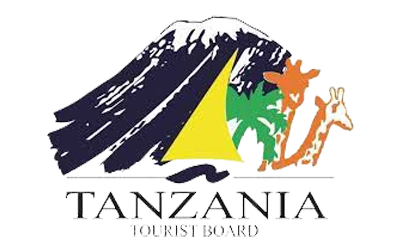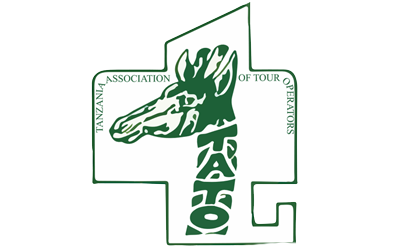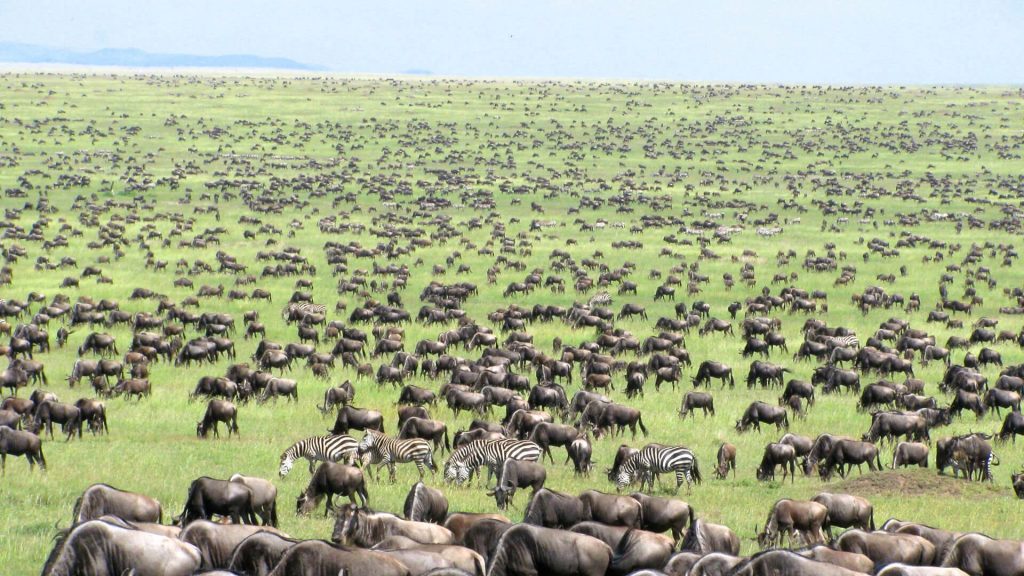7 Day Western corridor Wildebeest Migration Safari
The West Serengeti is a special place seldom explored by most tourists. The West Serengeti is commonly called the Western Corridor as the area takes the shape of a giant valley (running east to west) that is flanked to the north and south by hills. From May to July the wildebeest migration is often halted on the south side of the Grumeti River, which has some channels which block or slow their migration north. The wildebeest then congregate there, in the Western Corridor, often building up to a high density before crossing the river. This narrow corridor is about 50 miles long and flows towards Lake Victoria. Game viewing highlights include all predators, rare Colobus monkeys, and Nile crocodiles, large herds of Topi antelopes, elephants, and good concentrations of carnivores.
Day 1: ARRIVAL IN ARUSHA
On your arrival at Kilimanjaro International Airport, you will meet with a Tiem Tours and safari representative then transfer to Arusha for Dinner and overnight.
Day 2: ARUSHA – TARANGIRE NATIONAL PARK
In the morning you will be collected from your lodgings in Arusha by our personal safari guide. We set out for Tarangire National Park across gently rolling Maasai plains with scattered acacia trees. As we zip along we pass many Maasai in their colorful dress walking on the roadside, riding bicycles, herding cattle, and driving donkey carts. Tarangire National Park, Known for elephant herds that can be 200-strong and 700 resident lions, Tarangire is second only to the Serengeti when it comes to wildlife numbers in Tanzania. It’s a varied landscape of grasslands, swamps, and woodlands and is dominated by majestic near prehistoric baobab trees and is cut in two by the Tarangire River, and is home to more than 550 bird species. From the open roof of our safari jeep, we experience the seasonal swamps, savanna, and life-giving Tarangire accommodations to encounter a multitude of creatures from zebra to wildebeest, buffalo, elephant, and giraffe, to name but a few. It is possible we will glimpse lions stalking prey or leopards relaxing in the trees above.
After our extensive game drive, we drive to one of the tented camps outside the park for overnight and dinner in a tasteful restaurant and a most capacious room to harbor our ease and dreams of wild cats!
Day 3: SERENGETI WESTERN CORRIDOR
After breakfast, we journey on heading up towards the fertile highlands where wheat, coffee, and corn, are grown by the Iraqw people. Passing through the Ngorongoro Conservation Area, we will be afforded a view of the breath-taking Ngorongoro Crater before traveling onwards to the Serengeti National Park which we will reach by midday. The Serengeti National Park is the largest park in Tanzania covering an astounding 15,000 km squared with diverse landscapes and habitats such as grassy plains, swamps, lakes, savannahs, and mountains. Here the great migration of wildebeest, zebra, and antelope takes place, and, depending on the season, we may have the opportunity to witness thousands of animals in their search for food and water.
After an extensive game drive, we drive to the western Serengeti for an evening meal and overnight stay at a hotel/Tented camp for dinner and an overnight stay.
Day 4: SERENGETI WESTERN CORRIDOR
After breakfast, you will depart with picnic lunches for a full-day game drive.
Around the end of April, May, and June, a vast army of wildebeests along with its partners: zebras, elands, and gazelles mill around the Western Corridor of the Serengeti, south of the Grumeti River. You can encounter leopards and hyenas and ahead by giant Nile crocodiles, many hundreds perish as some hazard the river crossing while others detour it. But the beauty of the landscape, stretching without end beneath an infinite sky on a Serengeti West Safari, changes something within the watcher, who becomes more aware of the place of humankind within the drama of the animal world. In the evening return to the lodge for dinner and overnight.
Day 5: SERENGETI CENTRAL
This entire day is set aside for game drives upon the Western Serengeti. Later Afternoon drive to Central Serengeti, The Serengeti national park is one of the world’s most famous National Parks, the Serengeti is known for its annual wildebeest migration that crosses its vast grassy plains. With more than two million wildebeest, half a million Thomson’s gazelle, and a quarter of a million zebra, the Serengeti supports the greatest concentration of plains game in Africa. The animals’ trek is determined by the rainfall and varies from year to year. In November and December, the animals move from the northern region, dominated by woodlands and hills, to the grassy plains of the south. During the longer rainy season from April to June, they return to the north. Apart from the migrating herds, we may have the opportunity to see the resident predators, leopards, cheetah, and lions, fulfilling their role in the circle of life.
After an extensive game drive, you will drive for check-in at the Tented camp for a hearty dinner and another night by the fire of relaxation and conversation under the sweeping majesty of the star bright African night out, upon the ‘Endless Plain’.
Day 6: SERENGETI TO NGORONGORO CONSERVATION AREA
After breakfast, you will drive from Serengeti National Park to the Ngorongoro Crater.
When you first see Ngorongoro Crater, it looks like a forgotten world. The main feature of this astounding conservation area and UNESCO World Heritage Site is the Ngorongoro Crater. The largest unbroken volcanic caldera in the world, with its steep walls, is home to incredible scenes of natural drama daily, as prey and predators graze and stalk their way around the open grasslands in such close proximity that it truly feels like a Garden of Eden.
The driver down into the Crater is an adventure in itself and when you reach the Crater floor, you quickly find yourself amongst large numbers of wildebeest, zebra, gazelle, and more than 500 bird species. The Crater provides you with the best chance of seeing the endangered black rhino, which can sometimes be spotted in the open grasslands. After a full day of adventure in the evening will drive to the Karatu region to the hotel/lodge for dinner and overnight
DAY 7: LAKE MANYARA NATIONAL PARK TO ARUSHA
After breakfast, we drive to our final destination on this epic safari – Lake Manyara National Park. This relatively small but diverse park, 120km west of Arusha, is so named for the shallow salt lake which covers a good seventy percent of the park’s surface area. Flooding and drying with the seasons the soda lake is home to thousands of flamingos as well as over 500 other bird species. On our exploration of the park, we will see monkeys, giraffes, zebra, wildebeest, buffalo, elephants, and with some luck, lions lounging in the trees. The park is known for its diverse landscapes; not only open grassy plains but also primate-filled woodlands and baobab-dotted cliffs. After another memorable game drive we, with our adventure at an end, return to Arusha in the late afternoon for dinner and overnight at the hotel.
INCLUDED
Full board accommodation whilst on safari in the Lodge /tents campsite.
All park fees (entry fees, transit, and crater fees)
A highly – credentialed private English Speaking Driver /Guide during your journey.
Mineral water on a board safari vehicle
Transportation in a 4×4 safari vehicle (Private) and all airport transfers
Government taxes
NOT INCLUDED
Tanzania Visa: $50 per person on arrival, USA and CANADA passport holders USD.100
International flight and domestic flight
Optional Tours (balloon rides USD. 500 per person etc.)
COVID 19 Certificate test fees – But we can help you to get it on time.
Meals and transfers other than those specified in the sample itinerary.
Items of a personal nature such as laundry, drinks, and other expenses at hotels, gratuities to safari guide, waiters and waitress at the hotel, etc.
Design your own trip
Get in touch with our Tour Consultant to start planning your own unforgettable experience
Contact us
- +255 742 688 249
- info@safarinuggets.com





© 2023 Safari Nuggets – All Rights Reserved.

